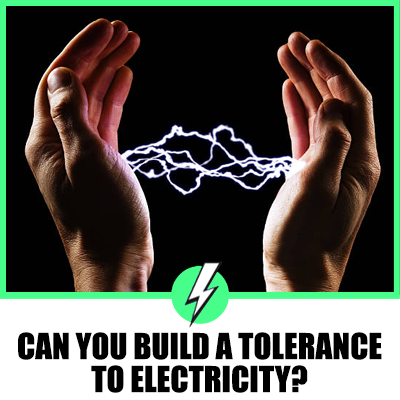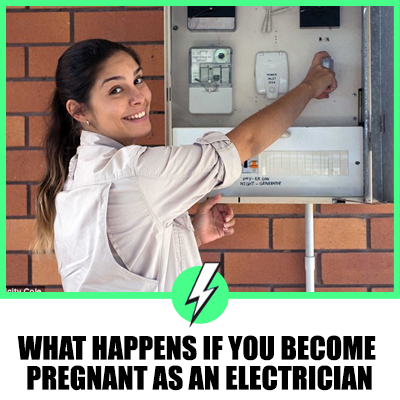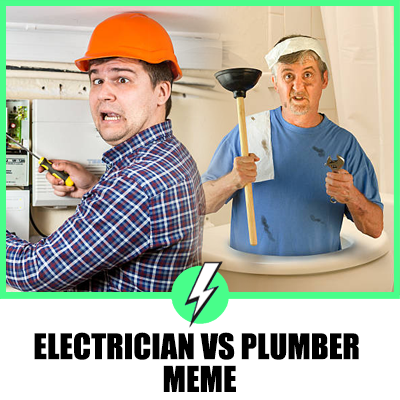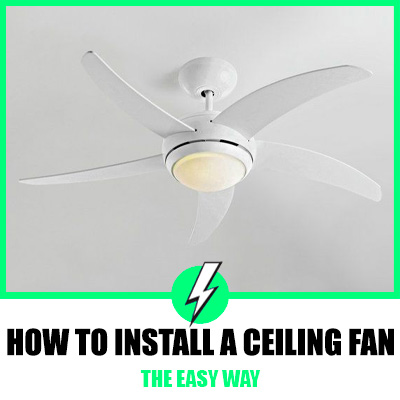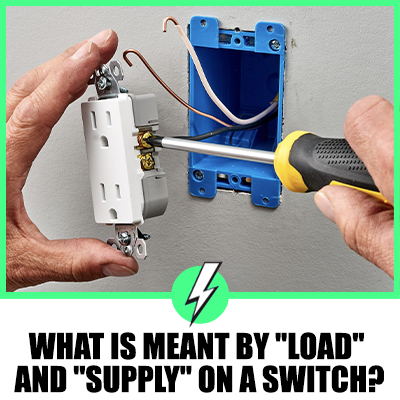Ultimate Guide to Garden Lighting Installations
One of the main highlights of your home is your garden. Gardens provide a beautiful space and a lot of time is spent gardening and landscaping, but the beauty gets lost and goes unappreciated when the sun goes down.
To showcase your hard work at night, you need illumination with outdoor lighting equipment. Lighting up your garden is not just for the aesthetics; it will also help you, and your visitors navigate the path to your home in the dark.
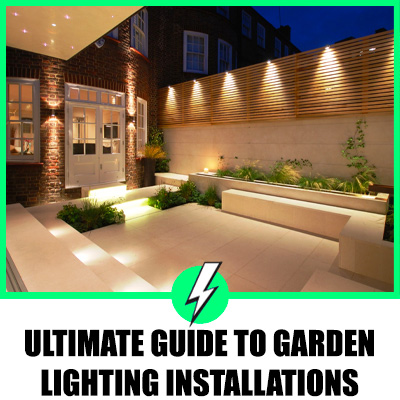
This article will be an ultimate, comprehensive guide to lighting your garden. We will include safety measures, tips and tricks, as well as garden lighting effects to help you decide on how you can install and layout your gardening equipment.
We contain everything that you need in tackling the light installations in your garden, so let’s begin.
Benefits to illuminating your garden
There are many reasons as to why you should light up your garden or your front yard. Here, we’ve listed the benefits that a lit garden will bring you.
1. The light in your garden will protect your yard from any intruders.
For one, it is not a good idea to leave your yard dark during the night. A dark yard is attractive to intruders who are looking to commit a crime. Whereas, lit up yard will turn away any possible threats to your home as the light will expose their movement.
UK police departments recommend homeowners to light up their garden as a means of crime prevention.
Security lighting has a bright light and will light up your garden light generally on an automatic motion detector. The bright light will scare off any possible intruders (burglars, trespassers, and so on), and even those destructive squirrels.
2. The light in your garden will illuminate the path.
Gardens require maintenance and upkeep. The extensive landscaping should remain undisturbed at all costs. Navigating your way through the garden is challenging, especially at night. To avoid disturbing the lawn or ruining the plants, you can lit up your path to guide night visitors.
Another reason why you should light up the path, aside from protecting your pristine landscaping, is to ensure the safety of your nighttime visitors. It would be challenging to navigate your way in the darkness, and you may stumble upon rocks or decorations that might cause accidents:
3. You can keep the party going even after sunset.
Another great reason to light up your garden is to provide illumination during nighttime parties. Instead of your garden party ending prematurely before dark, you can continue into the night because of your lit up garden.
4. The light transforms your garden.
Lastly, as the most apparent reason—the light transforms your garden. There are a day version and a night version of your garden, and it’s enjoyable to look at both ways.
Contents
Outside electrical wiring regulations in the UK
While the lights in your garden may be outside, they are still within the bounds of electrical wiring and building regulations. Garden lights are not the only outdoor electrical installation that is covered by these regulations. These also include outdoor sockets and supply of electricity to fountains or fish ponds.
Before you get too excited and start envisioning how you will layout your garden lights, it is essential to first ensure safety by following building regulations, like how you would follow for the inside of your home.
The following are the primary safety regulations that should be followed when it comes to garden lighting.
- The NICEIC (National Inspection Council for Electrical Installation Contracting) and ELECSA recommend that all garden lights should be installed by a qualified professional.
- In the past, homeowners were required by Part P building regulations to report to the Building Control Authorities any plans on outdoor electrical instalments. However, this is no longer the case for most of the UK except in Wales. The following are the outdoor electrical equipment that should be reported to Building Control Authorities for Wales:
- Electrical supply to a detached garage or shed,
- Electrical supply to an electric gate or a fish pond,
- Electrical supply to Garden lights
- Electrical supply to Outdoor sockets and outlets
- Only a qualified electrician is allowed to carry out outdoor lighting work for you. Outdoor lighting, when mishandled by someone who does not have the correct qualifications and knowledge, will pose a hazard to you and your visitors.
- All cables, sockets, wirings, and any electrical equipment that are to be used outdoors needs to be protected with RCD (residual current device). An RCD is a safety device that ensures power will be shut off once there has been a leak of electricity. This leak of electricity could range from the cable getting accidentally damaged/cut off, or if someone is being electrocuted. RCD-protected devices will prove to be essential, in case of accidents or hazards.
- All underground cables should be wrapped in warning tape so that any future garden diggers would be alerted to the presence of a wire, and they will know to handle it properly and continue their work with caution. The cables to be used outdoors should always be laid near buildings whenever possible. It is also recommended that you use Steel Wired Armor Cables (SWA) for outdoor lighting projects.
- All underground cables should be buried at a sufficient depth, where it is unlikely to be disturbed or damaged by any above-ground activities such as the use of gardening tools and lawnmowers. The electrician needs to dig a trench at a sufficient depth in the garden for the wires, or to insert your cables through an appropriate protective tube. This protective tube can be a flexible plastic conduit or plastic drain pipes.
Outdoor electrical sockets
Lighting your garden would require you to place electrical sockets outdoors, as a means of providing electricity to all your outdoor electrical equipment. There is a vast difference between indoor sockets to outdoor sockets.
Indoor sockets aren’t meant to stay outside all-year-round, so they are susceptible to damage brought by the changing weather, dirt, and the outside elements. Outdoor sockets are used for electrical installations outside your home because they keep out water and prevent electrical hazards.
In whatever case, there is no excuse in taking the risk and not using outdoor-appropriate sockets for outdoor installations.
What are the key differences between an outdoor electrical socket and a regular socket?
- Outdoor sockets are usually mounted on the wall, whereas regular sockets are integrated into the wall.
- Outdoor sockets typically have a protective covering. Some coverings can be closed even if there are cables that are plugged inside. Regular outlets do not have such covers.
- Regular sockets generally have a low IP rating as compared to outdoor outlets.
- The usual IP rating for outdoor devices is IP66, while regular sockets have a score of IP22.
- Outdoor sockets are meant to withstand challenging outdoor environments against rain, water, dirt, dust and UV light. Indoor devices are less robust in terms of resistance to elements.
Here are some outdoor electrical sockets that you can browse and check online:
TIMLand Outdoor Waterproof Double Sockets Wall Electrical Outlets
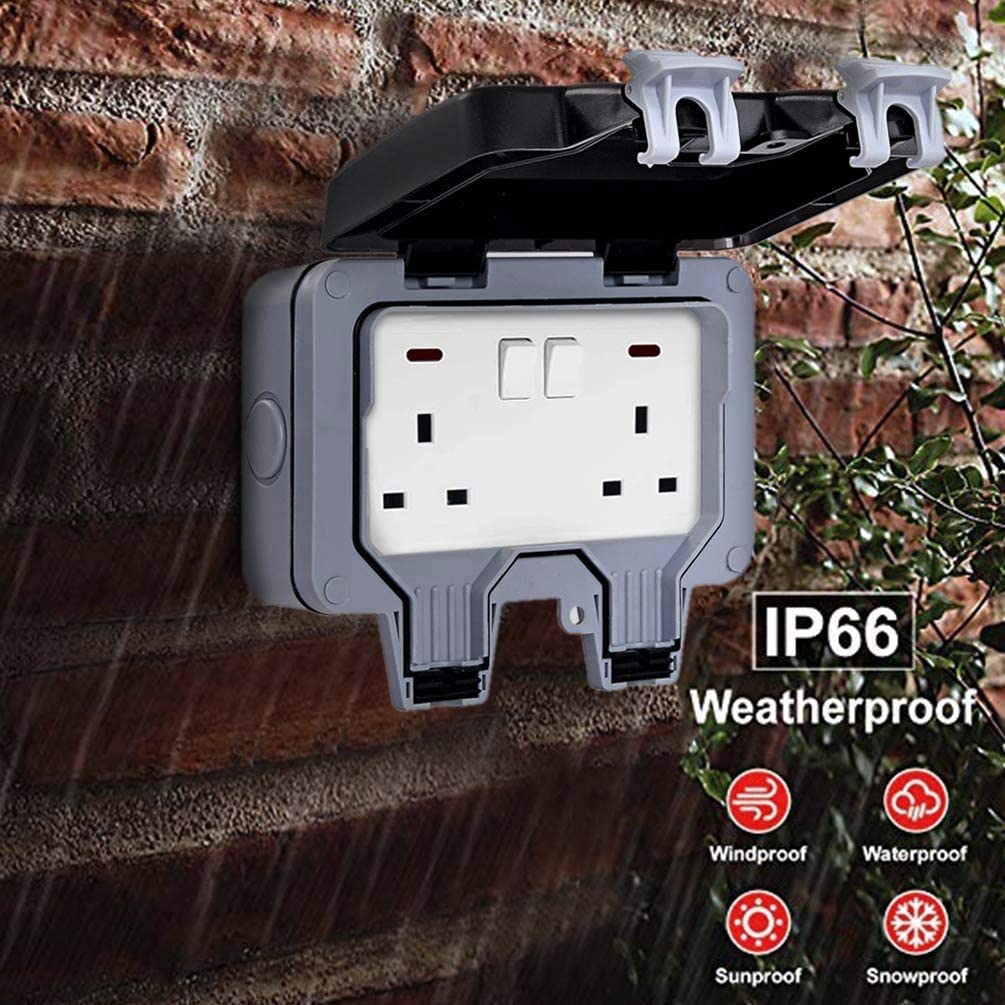
With an IP rating of IP66, this waterproof double socket electrical outlet has functional capacity against dust and water that are plentiful outdoors. This socket is guaranteed not to crack or fade under the UV light. It is also corrosion-resistant.
It is safe and convenient. This product has passed the British National Standard for sockets, which is BS1363. Moreover, if it is not in use, you can choose to close the cover and install a padlock to prevent other people from plugging in without your permission and stealing your electricity.
There is a lockable cover that prevents accidental opening. There is also a sealing ring that is made of rubber. It is both waterproof and dustproof, which ensures the security of the socket.
Previous buyers recommend this product after their satisfactory purchase. Most testimonials say that this is a good-quality outdoor socket made of sturdy materials, for a relatively low price.
BG Electrical Double Weatherproof Outdoor Switched Power Socket
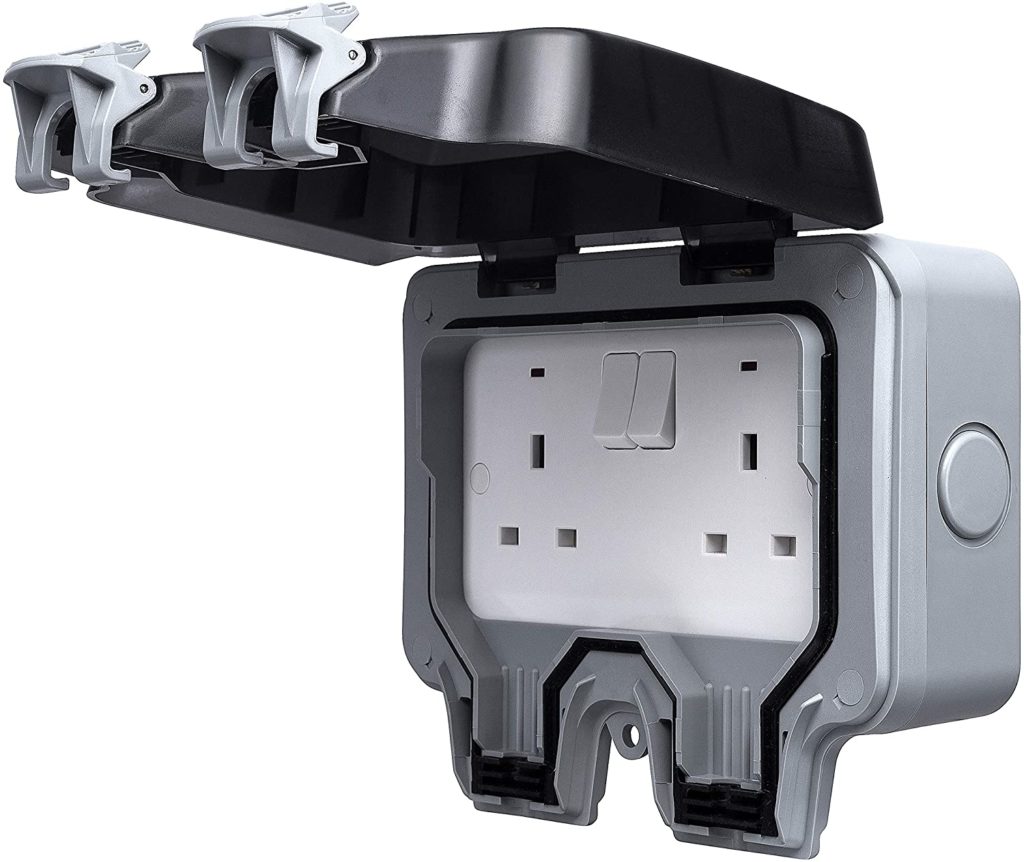
This is an Amazon Best Seller, and its status in the Amazon website reflects the quality and use that you would get out of this product.
It is weatherproof and dustproof, with an IP rating of IP66. There is a transparent cover that snaps in place, and it has neon LED indicators. The main feature of this outdoor socket is the knockout mounting box that makes it easy to install in different locations (patios, garages, and sheds).
While it is significantly cheaper when compared to other outdoor sockets, it is guaranteed that you will get a high-quality product. BG Electrical is a veteran when it comes to outdoor electrical equipment, evidenced by the 25 years that they have been in the industry.
There are multiple positive feedbacks of previous buyers, indicating their extreme satisfaction with this product. The sheer amount of good reviews and sales is what made this product an Amazon Best Seller.
Mega Socket Double Waterproof Outdoor 2 Gang Switch for Outside Use
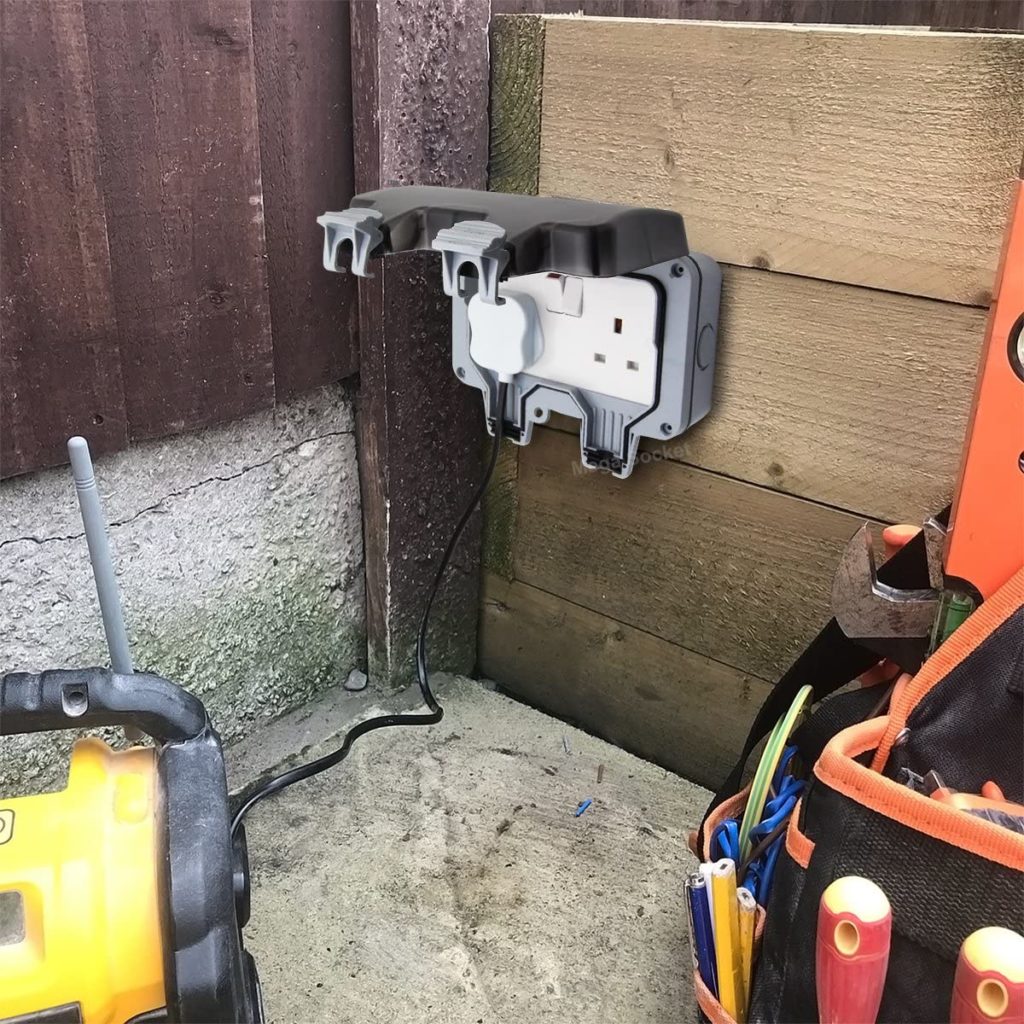
Another Amazon Best Seller, this outdoor socket has an IP rating of IP66, rated 2 gang, with a 13 Amp socket and runs in 240 volts.
It allows the cable to be inserted from all four sides through the blocking cap in the cover. It is robust and UV-resistant.
The fully closed over plug tops ensures safe use for electricity to be delivered outside of your home.
Previous customers have remarked on the easy installation process and the user-friendly aspect of this cheap, robust, and high-quality outdoor socket.
Different options of RCD for outdoor lighting equipment
It’s crucial to understand that not all sockets are RCD-protected. First, double-check if the outlet you have is RCD-protected. If you are unsure, different options are available so that you can have an RCD-protected socket.
Plug-in RCD
If your socket does not have a built-in RCD, you may opt to use a plug-in one, instead.
A plug-in RCD is a portable device that can be plugged into your standard socket-outlets. You can plug in an appliance into the RCD.
However, there are drawbacks like protection is only given to the person who is directly in contact with the equipment, including the lead plugged into the plug-in portable RCD.
Replace with a fixed RCD/socket-outlet RCD
It is much more practical for you to replace your non-RCD-protected sockets with socket outlets that have built-in RCD with them.
Fixed RCDs are installed in the consumer unit fusebox. It protects individual and group circuits. This is the highest protection you can get from an RCD as it encompasses all the connected wiring systems and plugged in appliances/devices.
On the other hand, a socket-outlet RCD are socket-outlets that are already built with an RCD. However, this only provides safety to the person who is directly in contact with the plugged-in appliances and equipment.
IP ratings for outdoor electrical devices
IP ratings are a crucial aspect of outdoor lighting installations. Aside from all outdoor electrical equipment being protected by RCD, they should also have appropriate IP ratings for their usage.
IP ratings are International Protection Ratings, which is a standard to describe the dust and water protection of an electrical device.
It’s usually written in this format:
IPXX
The two X’s are placeholders for the digits. The first X for the first digit describes the dust protection, while the second X for the second digit is the water protection.
An X is used as a placeholder if the value is 0. The concept here is simple; the higher the digit, the more protection.
Generally speaking, you would want your outdoor electrical appliances to have a value of at least 6 for both dust and water resistance.
This is to ensure that your outdoor electrical appliances will not wield to the harsh outdoor elements or cause any electrocutions or hazards.
Outdoor electrical conduit
We briefly mentioned outdoor electrical conduits in earlier sections. Here, we’ll discuss it on a deeper level so that you can gain a better understanding of the types of outdoor electrical conduits and how they are used.
Outdoor electrical conduits are tubes that protect exposed electrical wires. They can also be used for safeguarding cables that are buried underground or on walls where the cables could get damaged.
They are either made of rigid or flexible material, such as PVC or metal and are used to protect and keep wires in places.
The type of conduit is dependent on the surroundings, environment and purpose. However, the common choice is usually flexible trunking tubes.
Here, we have listed a few products that are listed in Amazon for you to check:
Loops 10-20mm Outdoor/External Cable Conduit Ducting
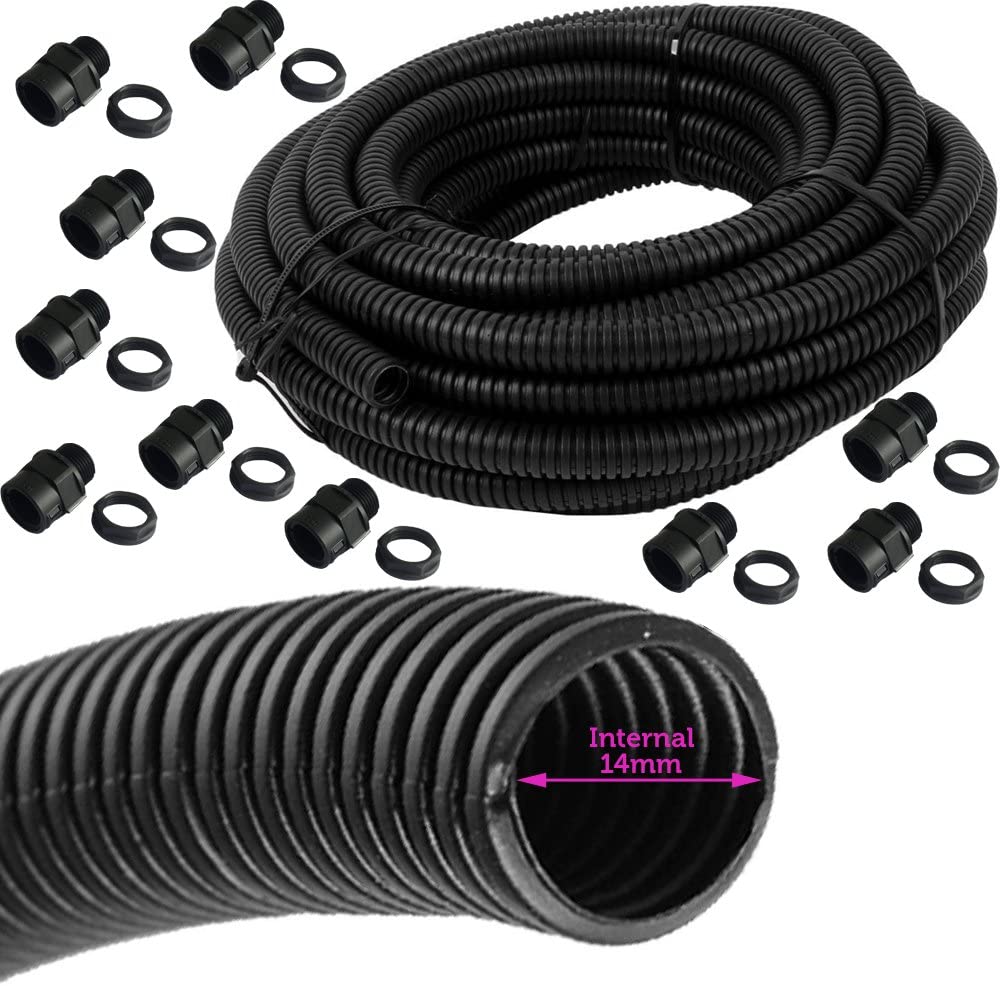
This is a flexible cable trunking kit that is designed to be used outdoors or for burying cable installations underground.
This kit includes 10x cable glands that you can cut down to your desired custom length for trunking the cables. In specific, it contains 1x10mm-20mm flexible cable trunking tubes, 10x cable glands that are rated IP40, and 10x nuts to secure the cable glands.
It is verified to meet the UK standards for supporting conductors and cables of up to 1000V AC or 1500V DC (EN50086.1), being bent easily by hand. Still, it should not always be subjected to flexing (EN50086.22) and for flammability as it is self-extinguishing (EN IEC 61386).
Previous customers consider this to be an excellent kit that is extremely helpful for outdoor cables and wirings.
MCG Industrial 10m 20mm Flexible Conduit Tube Contractor Pack with 10 Glands and Locknut
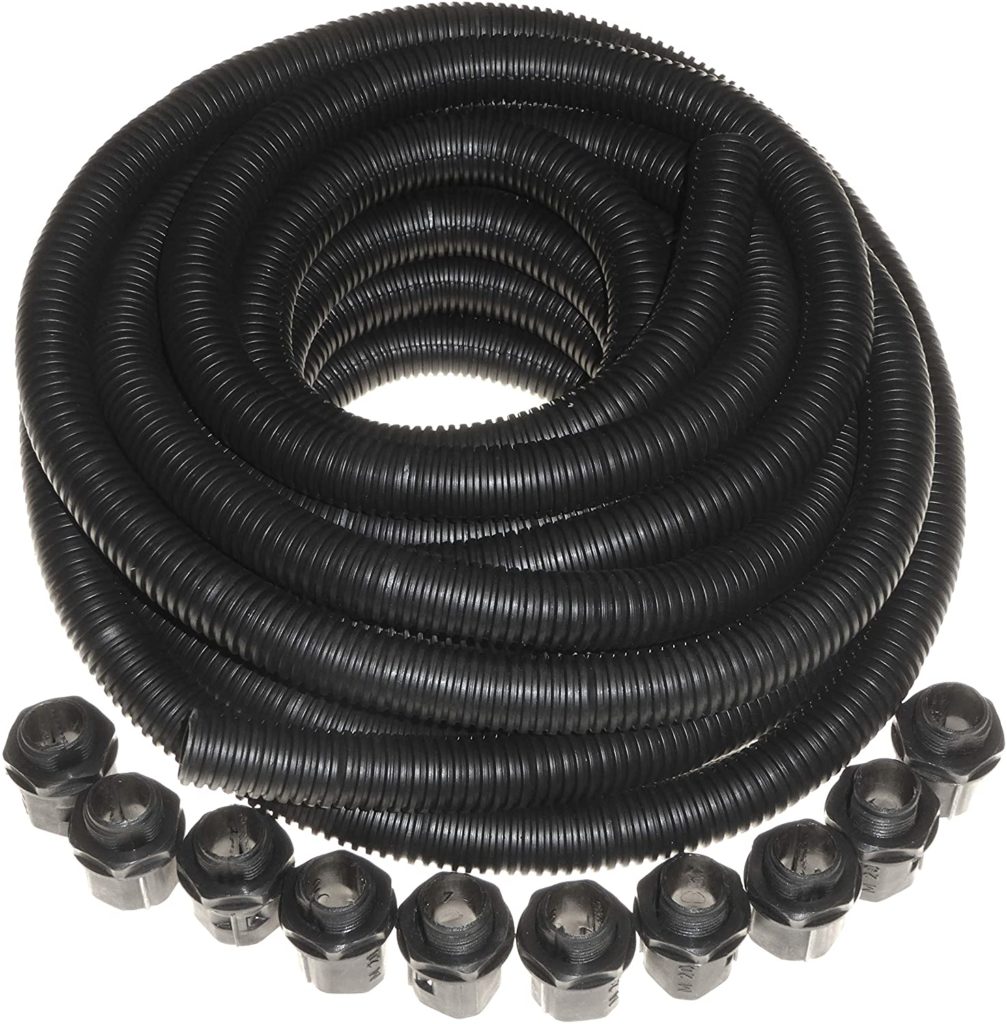
This is the Amazon Choice for conduit listings. It comes in a pack with a 1x10m reel of 20mm conduit and 10 locknuts. It is flexible and corrugated, made of polypropylene which is a self-extinguishing conduit that withstands temperatures of up to 95 degree Celsius.
These are made for outdoor running of cables, and underground trenching. The tubes are of high-quality and will not split easily during cable feeding. The conduit can be shortened to any length you desire.
A lot of previous buyers recommend this conduit as it is sturdy, made of high-quality materials and gets the job done quickly—from running power lines and cables to burying outdoor wires underground.
Permanent outdoor extension lead
While extensions are beneficial for extending the reaches of electricity to the appliances and electrical lighting equipment outside of your home, it is not a good idea to use a regular indoor extension for prolonged outdoor use.
Instead, you may want to look into installing a permanent outdoor extension lead that will serve as an extension of power to your garden lighting equipment.
Extension cords are hazardous, primarily when not used or handled appropriately.
Permanent outdoor extensions have a particular type of protective installation. This prevents moisture and water from seeping in and causes damage or hazard to the extension cord. Aside from that, the outside coating is made to withstand extreme temperatures and direct exposure from the sun. Indoor extension cords would quickly break down and cause a fire hazard with prolonged sun exposure.
Additionally, there is also a significant difference in the cord gauges of the two extension types. Indoor extensions are usually shorter at 8m while outdoor extensions can go up to 145m or more. This is because outdoor extensions are usually used with larger equipment. Thus, the need for a longer wire.
The plug for an outdoor extension cord is also different. It usually has three prongs to help and prevent electrocutions, grounding, or any electrical hazard. Indoor extensions often only have two prongs.
Electric cable for outdoor use
There are specific kinds of cables that are recommended to be used outdoors. These are more robust and have a protective shell that makes them resistant to the harsh environment of the outdoors. Like all outdoor electrical equipment, electrical cables should also be RCD-protected.
SWA
SWA is the most reliable and most common choice for outdoor electrical cables. They are robust, sturdy and high-quality, and readily meets the safety requirements without any additional device or equipment. There are two types of SWA cables: XLPE and PVC. The XLPE ones can sustain up to 90 degree Celsius, while the PVC ones can only tolerate up to 70 degree Celsius.
HiTuf
HiTuf are multicore fibre cables and are not recommended for underground use. However, they are robust and resistant enough that they can be used for other outdoor electrical purposes such as running the wires near buildings and above ground.
Regular Cable Protected
You can use regular 2.5 cable for circuits outside as long as the cable is protected in conduit like we explained before. The plastic protection provides a barrier to the cable that isn’t protected from external environments.
Garden lighting effects
There are different ways that you can light up your garden. By using various equipment and positioning them differently, you can achieve a whole new ambience and effect.
In this section, we’ll discuss the most common techniques that are usually employed for garden lighting.
Uplighting
Uplighting is the most common effect that is employed in gardens. However, it is also used in landscaping and decorations. It produces a dramatic effect and looks the best in darkness.
Uplighting can be simply achieved by using torch-like lighting equipment, and planting it to the ground with the light pointing upward.
This creates an effect of light coming from the ground and illuminating its nearby surroundings.
You can also choose to place your lighting equipment at an angle to catch your plants at different angles and form exciting shadows.
Downlighting
Downlighting is the opposite effect of uplighting. It only works well with high-altitude points, where there is enough height to create the effect. This is usually done under a tree or a pole.
You can choose to hang light sources from a tree and provide more light to the scene that is located below the tree. Another great location to point downlighting to is bodies of water like ponds and pools. The reflection in the ripples will create a beautiful effect and provide illumination for security cameras.
Similar to uplighting, you can also play around with different angles and see which exciting shadows are formed.
Shadow lighting
If there are any sizable objects in your gardens, like a pretty potted plant or a garden statue, then you can place an ample light directly in front of it to showcase the object. At the same time, this will form a dramatic and large shadow that will look best if created in a flat or smooth surface.
Play around on the angle of the light, and its location away from the object to create interesting shadows.
Spotlighting
Spotlighting is usually done with beam lamps. You can choose a particularly interesting focal point within your garden, like your collection of flowery plants by the corner, or interior landscaping design. Then, use multiple spotlights to bring attention to these beautiful areas.
Moonlighting
Moonlighting is the effect of using the light of subtle brightness, positioned on a high altitude to bring an even, overall illumination into a large area. It is essentially the effect of mimicking how natural light from the moon would look like in a reasonably cloudless night.
Spread lighting
There are special spread lighting torches that are used to achieve this effect. They usually have a “cap” or a “hat” that has a reasonably reflective surface. The hat spreads back the light to the area that is directly below it in a triangular shape.
This is a great way to illuminate bushes where flowers are blooming.
Grazing
Grazing is usually done on flat surfaces like walls or vines. This is when you place a small spreading light on the ground, perpendicular to the wall you are trying to illuminate. This is also a great way to light up the fence around your home, to make a clear distinction of where your house ends in the dark.
Garden lighting tips and ideas
Use string lights
A great way to provide light on a frequented area (like a patio or a yard tent) is to hang string lights overhead. String lights provide a dreamy, fantasy-like feel, and with other complementing lights, you can certainly set the mood to achieve this effect.
Moreover, string lights are safe because they run on low voltage and provide a soft glow.
The string lights that you want are waterproof, rechargeable and battery-powered. There are also solar-powered self-sufficient string lights that will be a great way to cut back on your electricity use and will prevent hazards that come from plugging.
Here’s our recommendation for solar-powered string lights:
DeepDream Solar Outdoor Fairy Lights
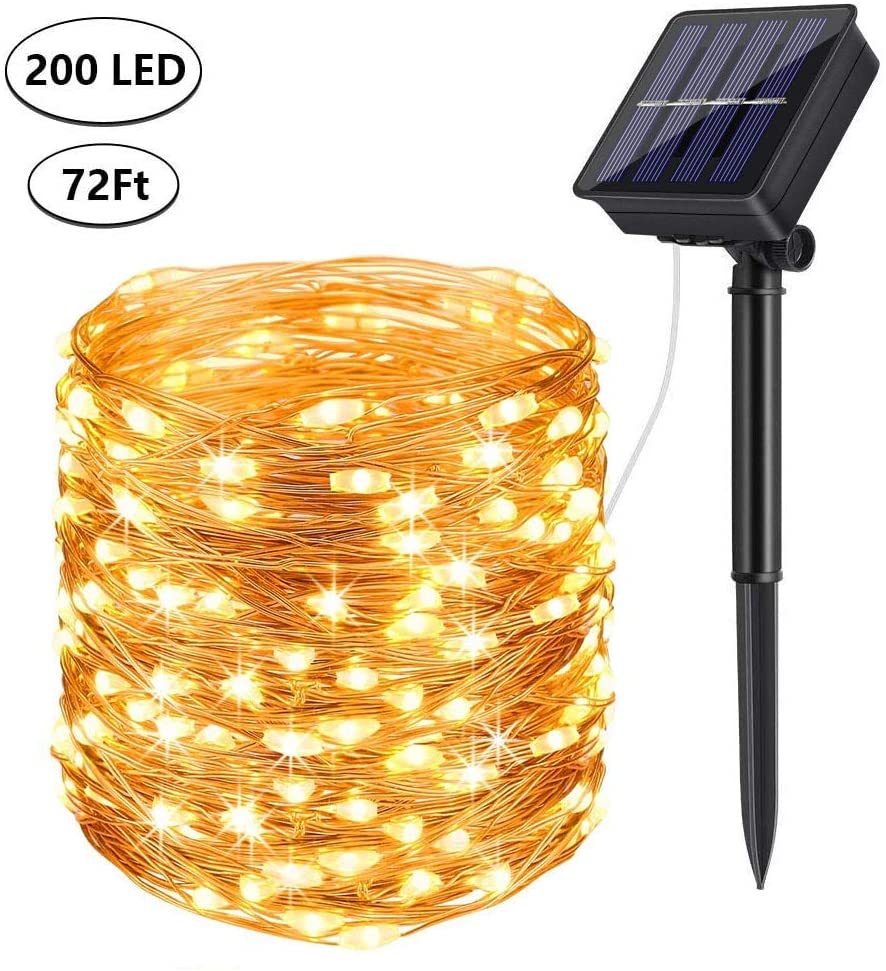
It is waterproof and charges quickly. There are also different modes to try. The best part about these solar lights is that it automatically turns on at night and turns off during the days.
Feedback from previous customers remark on the secure use, easy installation and assembly process. While some solar lights stop working after the first use, this one has been tried and tested by the current buyers.
If you are unsure of where to place your lighting equipment, the excellent idea is to outline the path to your home. And then, start putting your other lighting equipment from there.
There are light path torches that are low-voltage (12 to 15V) and do not require much energy. These torches ensure safety. There are also self-charging solar LED options to avoid overuse of your outdoor outlets or extension leads.
Here’s our recommendation for solar path lights:
Babz 10x Solar Powered Stainless Steel Post Lights
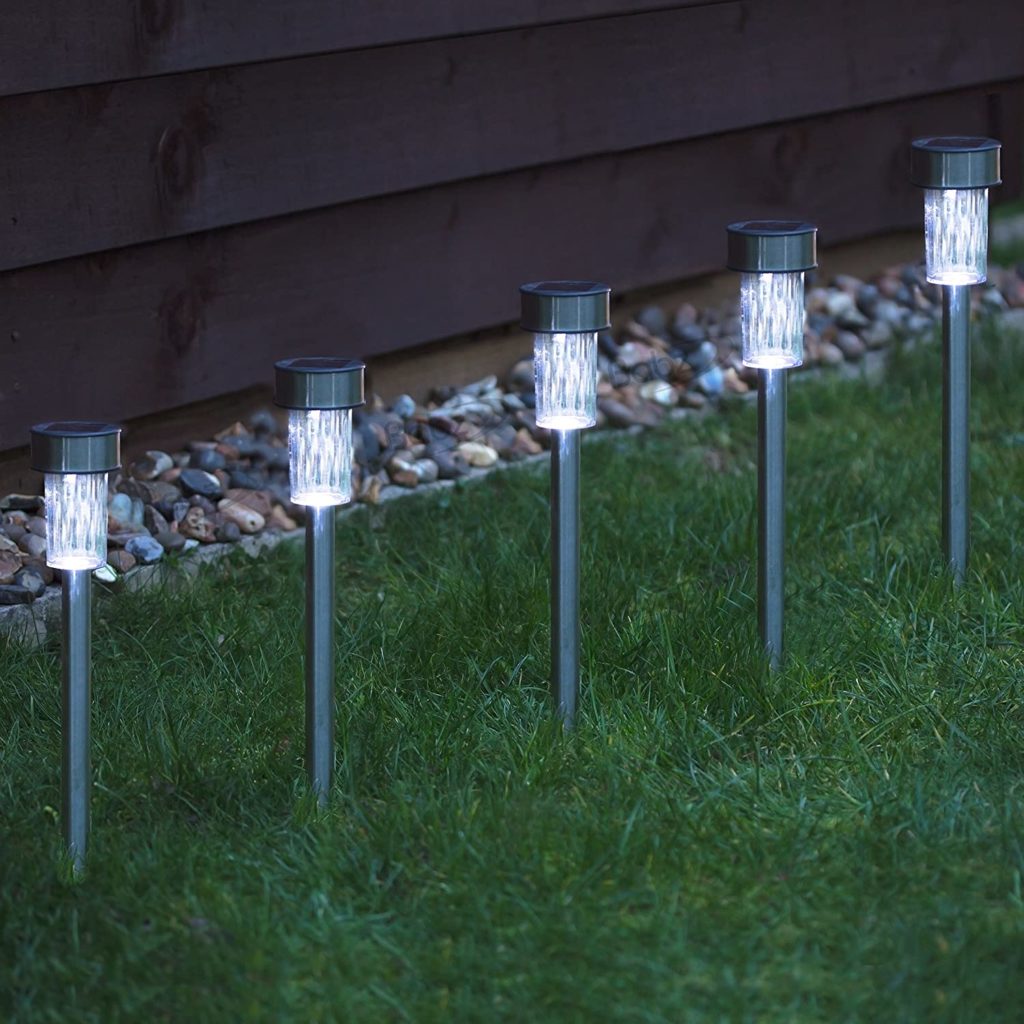
These post lights come in a pack of 10 and are made of stainless steel. Stainless steel is an extremely durable material and will certainly last you a long time.
They are solar-powered, and the batteries are already included. These self-charging path lights will undoubtedly upgrade your nighttime garden.
Think in a practical sense. One main reason why you should light up your garden is for safety and security.
Place security lights over areas where would-be burglars are most likely to come across.
The smart thing to do is to have motion-sensing floodlights that would surely scare away any attempt of trespassing or burglary. In whatever case, security lights are usually large and bright. It is also a good idea to place them in conjunction with the location of your security cameras.
Here’s our recommendation for security lights:
MPOW Motion Sensor Security Lights
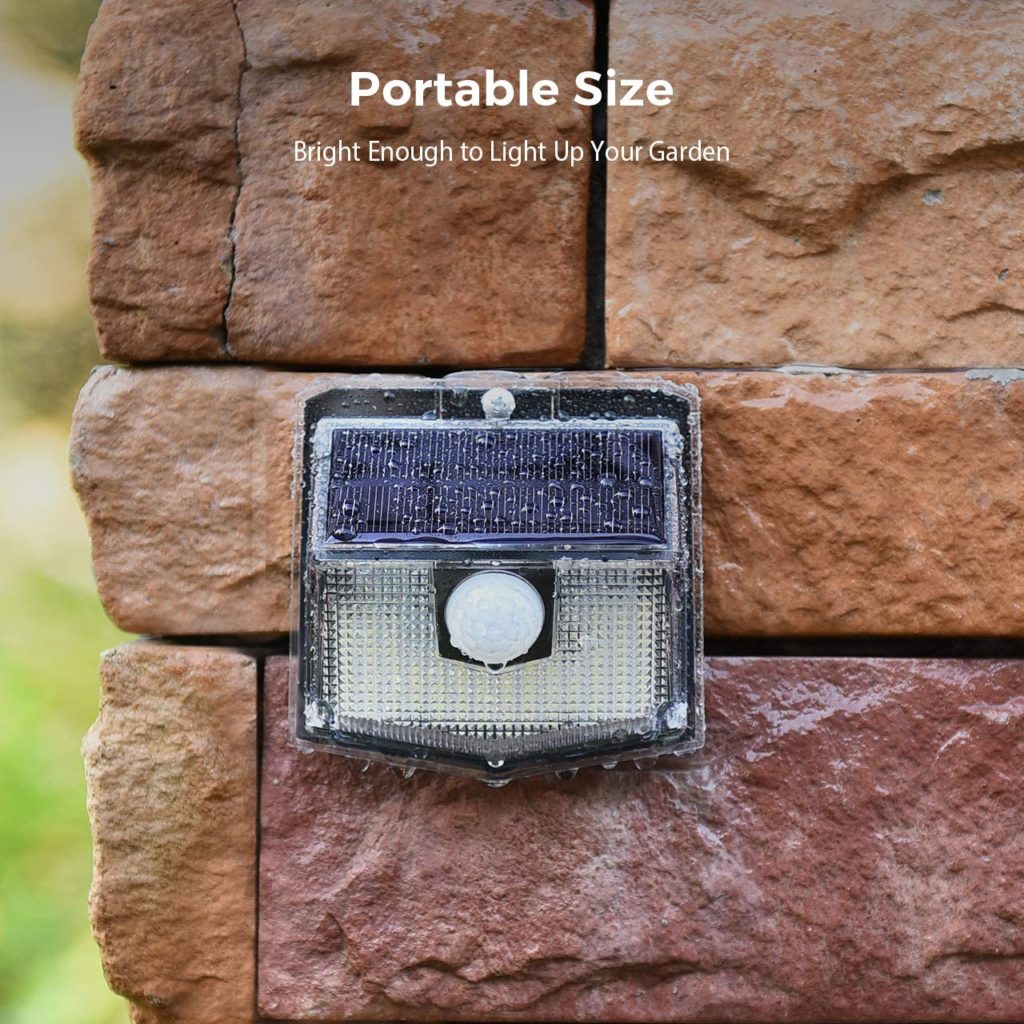
These motion sensor lights produce very bright light when activated. It has 1140 LED bulbs and covers a wide-angle for lighting. This is best placed near security cameras on pathways and your backyard.
Not to mention, these are also solar-powered and will reduce your carbon footprint as well as your electricity bill.
Take your time to plan carefully
You must plan the placement and layout of your lighting equipment across your garden. Remember, it is challenging and costly to keep installing and moving sockets and power supplies. Think of practicality and accentuating the most beautiful parts of your garden when planning. Concentrate on your focal points, and don’t forget to mount security lights and path lights first before the other decorative ones.
Generally speaking, you don’t really want your cables and transformers to be out and about in the daylight. These could get hot, and it would be dangerous if your kids start playing with them. Practice caution whenever you can.
This was the ultimate guide to outdoor lighting. We included all topics that are related to lighting your garden—from outdoor wiring regulations, outdoor sockets, outdoor extensions, outdoor cables, to the different lighting methods and ideas that you can do to try different effects. You now have all the knowledge needed to tackle garden lighting installations.
